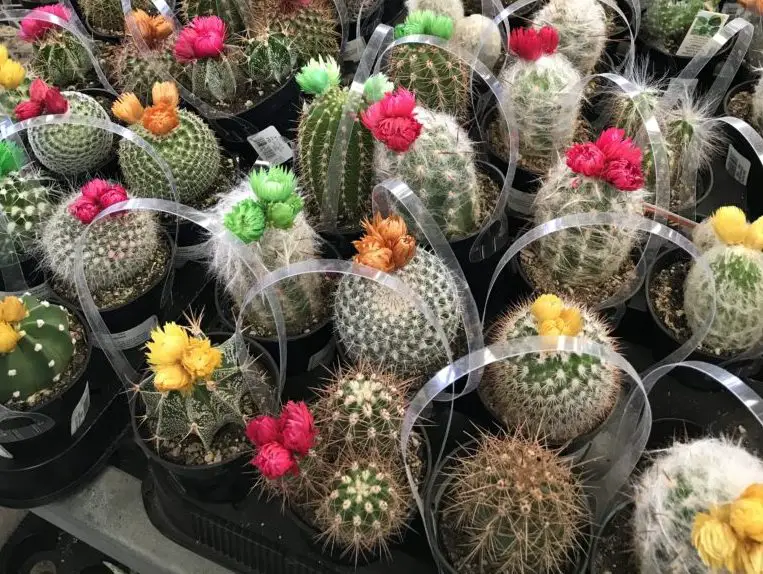Cacti are remarkable plants that have captivated enthusiasts and novices alike due to their resilience and unique aesthetics. One of the more intriguing phenomena associated with cacti is the appearance of straw flowers, which can embellish your cactus garden with stunning bursts of color and texture. Understanding the dynamics of straw flowers on cacti and their care can greatly enhance the visual appeal of your garden while addressing specific concerns related to cultivation and maintenance.
Straw flowers, scientifically known as Bracteantha, are more than just decorative elements. They symbolize the remarkable adaptability and beauty of cacti in arid environments. As these flowers bloom, they contribute to the ecological complexity of the habitat while offering a feast for the eyes. Understanding the characteristics of straw flowers on cacti will aid enthusiasts in creating a vibrant, flourishing garden.
One of the pivotal concerns for potential cactus gardeners is whether or not these striking flowers can coexist with the plants healthily. Addressing this concern entails delving into the symbiotic relationship between straw flowers and cacti, discussing the consistently increasing popularity of these plants among gardeners, and delving into effective care strategies that ensure optimal growth and bloom.
Understanding the Interconnection Between Straw Flowers and Cacti
The relationship between straw flowers and cacti is often misunderstood. While straw flowers do not grow directly on cacti, they can be part of the surrounding ecosystem. The arid and harsh conditions of a cactus garden provide a unique microhabitat where straw flowers can flourish, coexisting harmoniously with their succulent counterparts. The flowers themselves bring color and life, serving as a visual counterpoint to the often spiky and reserved presence of the cacti.
Another interesting aspect is the seasonal bloom of straw flowers. These flowers usually showcase their delicate blooms during the warmer months, coinciding perfectly with the growing season of most cacti. This synchronicity creates a tapestry of colors and textures that enhance the overall aesthetic appeal of your garden. When selecting straw flowers to plant alongside your cacti, opt for drought-resistant varieties that are capable of thriving in the arid climate typical of cactus environments.
Choosing the Right Straw Flowers for Your Cactus Garden
Finding the ideal straw flowers to complement your cactus garden can significantly impact its visual allure. Several varieties are particularly well-suited for cohabitation with cacti. One such variety is the Helichrysum bracteatum, commonly known as the everlasting strawflower. Its ability to withstand dry conditions and poor soil makes it an excellent choice for planting alongside cacti.
Another appealing option is the Xeranthemum annuum, or the everlasting flower. Known for its striking colors and long lasting nature, this flower—the name itself reflecting its enduring quality—can provide a vibrant contrast against the cactus’s sculptural silhouette.
Planting straw flowers at strategic intervals among your cacti not only enhances aesthetics but also encourages beneficial insects such as pollinators to visit your garden. This, in turn, can promote cross-pollination among your cacti, boosting their reproductive success and resiliency.
Effective Care Strategies for Straw Flowers and Cacti
The success of any garden heavily relies on proper care and maintenance. Even though both cacti and straw flowers are hardy plants, attention to their specific needs will optimize growth and yield. Here are some essential care strategies:
1. Soil Composition– Cacti and straw flowers thrive in well-draining soil. A mix that incorporates sand, gravel, and perlite will ensure that excess moisture does not cling to the roots, preventing rot.
2. Watering Regimen– Both types of plants have evolved to resist long periods of drought, but this does not mean they are entirely drought-proof. Ensure that you water your cactus and straw flowers adequately during the growing season while allowing the soil to dry completely between waterings. Overwatering can lead to dire consequences for both.
3. Sunlight Exposure– Cacti generally prefer full sun, while straw flowers benefit from similar light conditions. Ensuring that both receive ample sunlight will promote lush growth and abundant blooming, enhancing the visual appeal of your garden.
4. Pest Management– Despite their robust nature, cacti and straw flowers can fall prey to pests like aphids and spider mites. Early detection and swift action, using organic insecticidal soaps or neem oil, can effectively manage these infestations without harming the plants.
5. Seasonal Cleanup– As bloom cycles conclude, perform a seasonal cleanup to remove dead flowers and foliage, allowing for better air circulation and reducing the risk of fungal diseases. This not only maintains aesthetics but also encourages new growth as the seasons change.
In conclusion, the appearance of straw flowers in your cactus garden represents not only a delightful visual spectacle but also contributes positively to the ecological integrity and health of your plants. By understanding how to cultivate both straw flowers and cacti harmoniously, gardeners can create an impressive, resilient garden that showcases the unique beauty of these remarkable plants. With careful selection of species and attentive maintenance, your cactus garden can emanate charm and vibrancy all year round, making it a delight to behold. Embrace the art of cactus gardening with straw flowers, and enjoy the breathtaking fusion of colors and forms that nature provides.





Leave a Comment